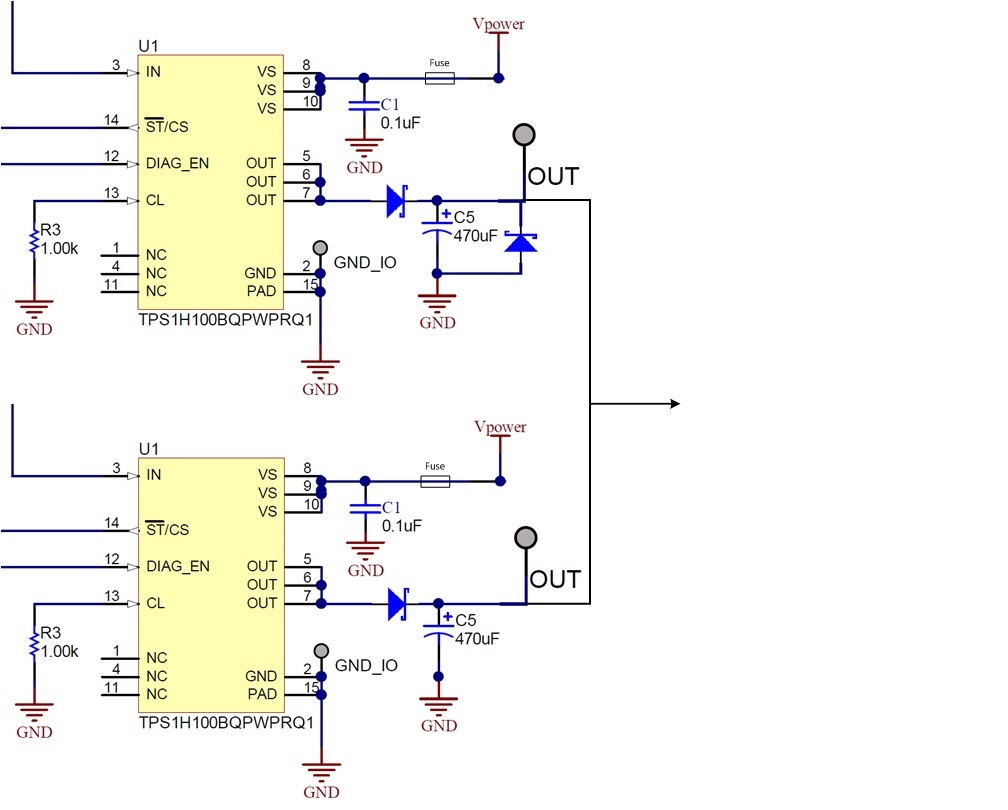Other Parts Discussed in Thread: TPS2660
I am connecting the TPS1H100 to a load that also has a large buffer cap of 470uF in parallel.
What can happen if the high voltage supply suddenly switches off and the buffercap is still charged so that a reverse current can flow through the body diode of the high side switch.
Will the device be able to detect reverse current since reverse polarity protection seems to work in a similar way.
Would I need to use an external diode in the output to block any reverse currents?



